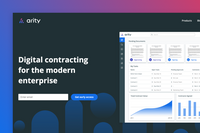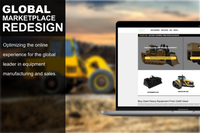Hire Freelance Mobile UX Designers
Matt Gillespie
Matt is a designer with a decade of experience crafting user-centric strategies to design and build digital experiences for startups, Fortune 500 companies, advertising agencies, and individual clients. He's guided user research sessions, conducted user interviews, led marketing campaigns, built style guides, and published many websites and mobile apps.
Show MoreStefan Pilipovic
Since 2010, Stefan has been collaborating with people, teams, and businesses to develop design systems, strategies, and processes to deliver more engaging experiences to targeted users. He is currently a lead product designer at a USA-based startup that develops intelligent SaaS products.
Show MoreJohn Challis
John is an experienced product manager and designer with skills in creating end-to-end user-centric experiences from concepts and research to wireframes and high-fidelity deliverables. He's worked with companies at all different scales from startups to large corporations like IBM on both B2B enterprise SaaS and consumer-focused products. John has experience collaborating with remote development and product management teams.
Show MoreDan Emil Balan
With over ten years of experience in UI/UX design, interaction, and micro-interaction, Dan has developed unique approaches to versatile projects from different industries, like financial, healthcare, social, fitness, and entertainment. He has had the pleasure of working with a variety of organizations, including Deutsche Bank, Orange, Misys, TotalSoft, and more. Dan eagerly follows the mantra: "Form follows function."
Show MoreJay Oldaker
Jay Oldaker is an experienced product designer and coach with a passion for helping others unlock their full potential. With more than 15 years of experience in the industry, Jay has developed a deep understanding of what it takes to create successful products that solve real-world problems. With a focus on collaboration, creativity, and innovation, Jay is committed to helping organizations achieve their full potential and create a meaningful impact in the world.
Show MoreBenjamin van Gelder
Benjamin has worked with leading companies such as ING, BNP Paribas, Banco Santander, or McKinsey—helping his clients to innovate through design by translating people’s needs into products or services. Partly creative, partly strategic, he’s a skilled UX/UI designer who specializes in improving UX by being, at the same time, the voice of customers and clients. Benjamin was also a TEDx speaker in Madrid, talking about design thinking in education.
Show MoreAmy Mew
Amy is a UX designer and researcher with over 15+ years of professional experience working with advertising and branding agencies on projects for small startups to Fortune 500. She has worked in-house and remotely with multidisciplinary teams of all sizes to help guide a product's functionality, development, content, and layout into an engaging, rewarding experience. Amy is always on the lookout for exciting and innovative collaborations.
Show MoreAlexandre Brito
Alexandre is a user experience designer and strategist with 12+ years of experience working for companies like Deutsche Bank, Philips, Vodafone, KLM, Intel, Pernod Ricard, Asics, and Toyota. He designs better ways for customers to experience products and services that improve their lives and the business's bottom line. What drives Alexandre is simplifying complex things, understanding behavior, and creating real, innovative experiences.
Show MoreGabriel Maldonado
Gabriel has an MBA in digital media management and spent a year overseeing the planning and execution of the first native mobile app for Sears Corporation. He specializes in UI/UX human-centered design solutions on internal and external platforms, offering maximum visibility and efficiency for clients. Gabriel also enhanced CareerBuilder's client platform based on extensive design research and UI/UX best practices.
Show MoreMike Slone
Mike is a highly experienced and successful product, UX, UI, visual, and branding designer with many years of experience creating large and small-scale designs. He has worked for global clients in many industries, including ExxonMobil, Reebok, Taco Bell, Nike, and many others. Mike has also provided his design and leadership experience to startups in healthcare, higher education, and SaaS companies.
Show MoreDiscover More Mobile UX Designers in the Toptal Network
Start Hiring







































































